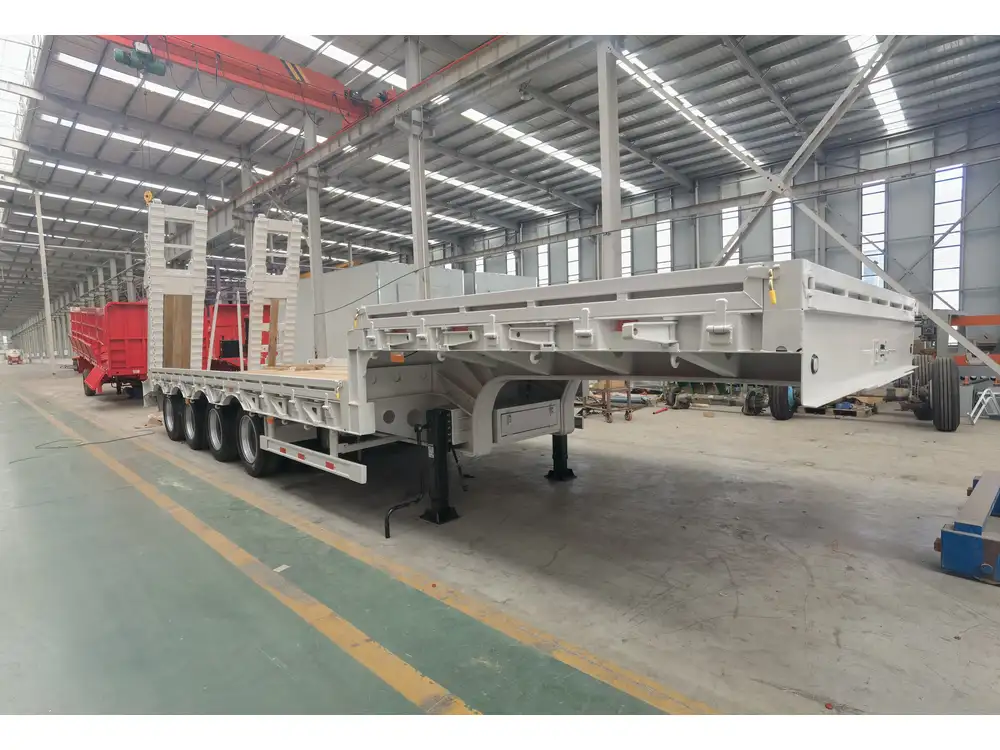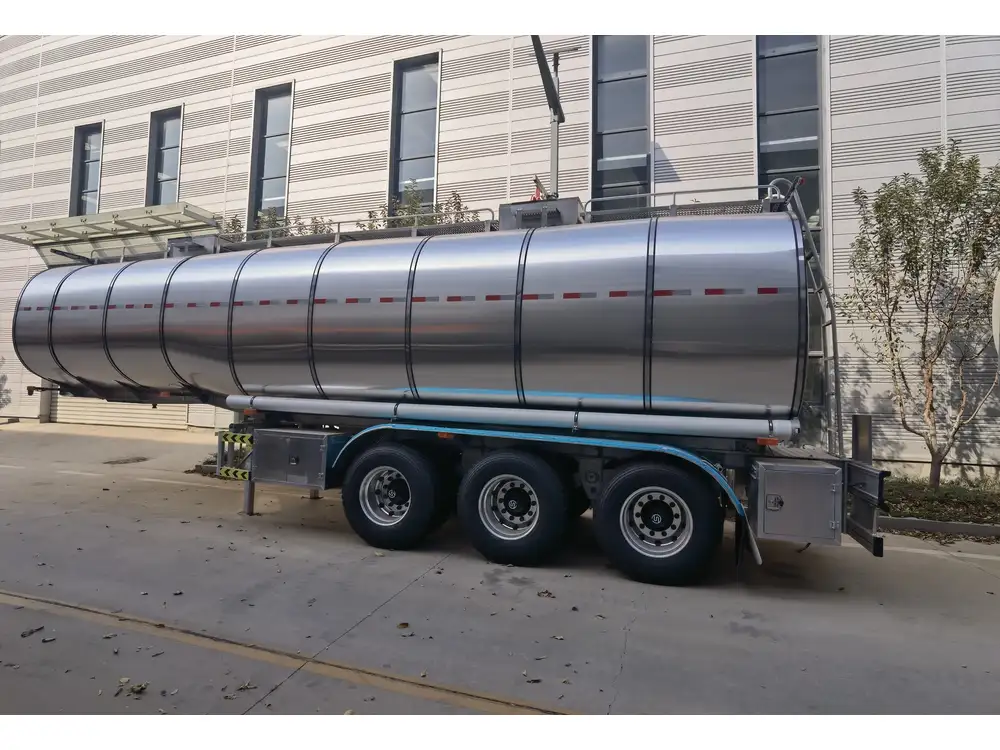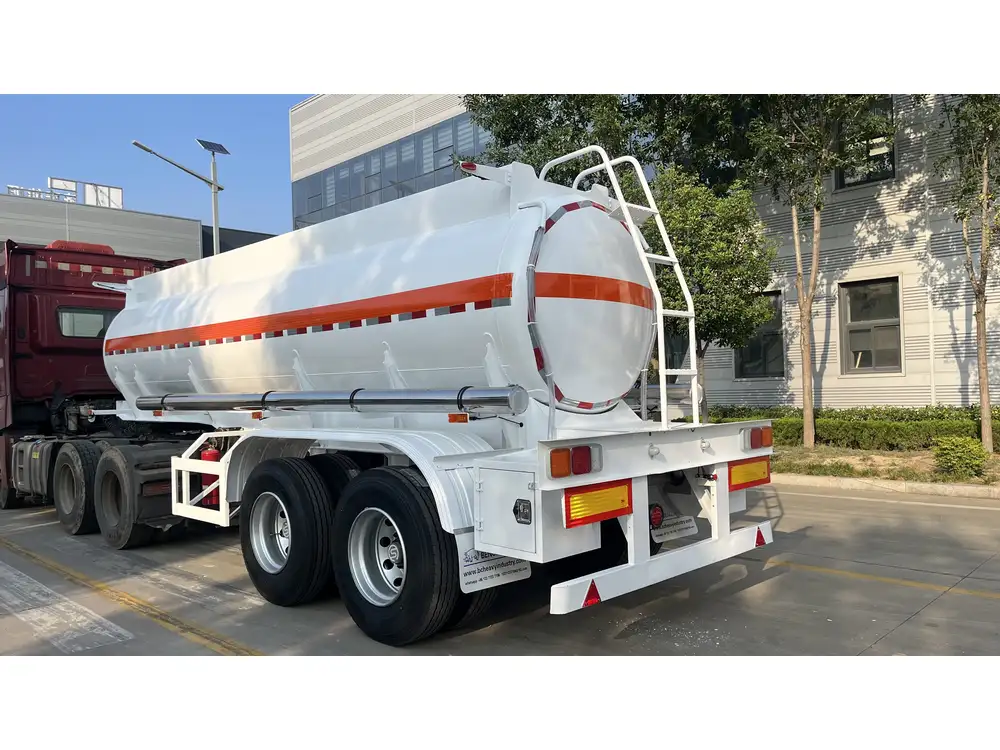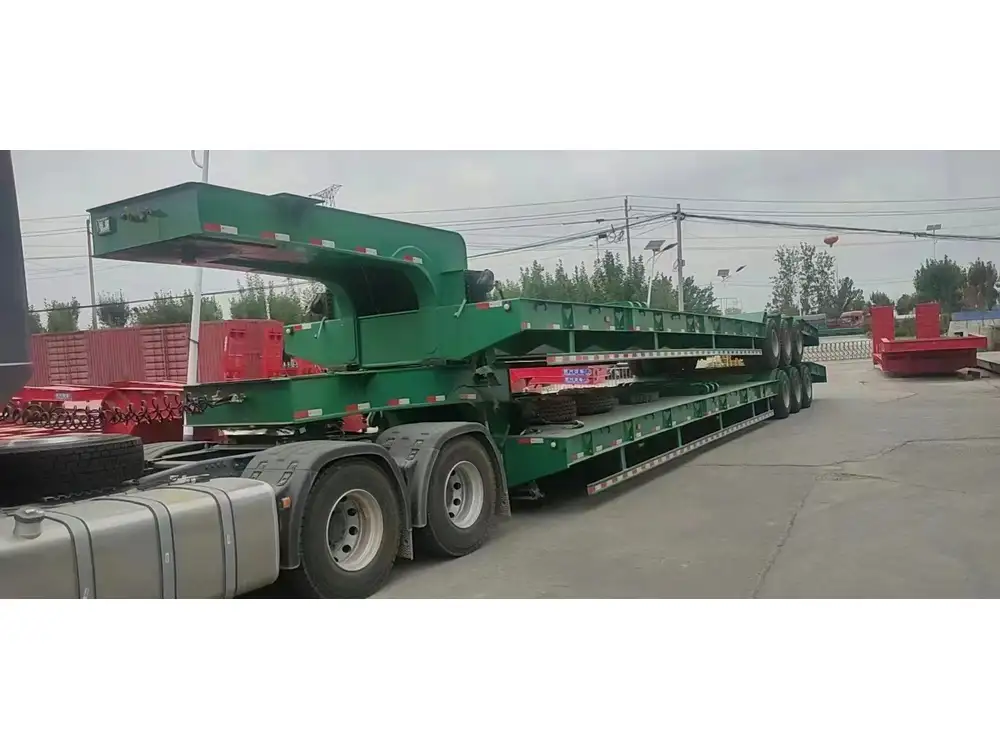What Is a Semi-Trailer?
A semi-trailer is a type of trailer that cannot be independently propelled and is designed to be attached to a tractor or prime mover. Unlike full trailers, semi-trailers have no front axle; instead, they are supported at the front by a fifth wheel coupling on the truck. This design allows for greater flexibility in transport and distribution due to the considerable weight they can carry and their ability to navigate tight turns with ease.
The Structure of a Semi-Trailer
Semi-trailers are engineered with several integral components that contribute to their functionality and performance:
| Component | Description |
|---|---|
| Chassis | The main frame that provides structural integrity. |
| Suspension | Typically air or leaf spring systems that absorb shocks. |
| Axles | Usually two or more axles that support the weight of the load. |
| Tires | Specifically designed for hauling heavy loads with durability. |
| Body | The part that holds the cargo, which can come in various types (flatbed, refrigerated, etc.). |

Varieties of Semi-Trailers
Knowing the different types of semi-trailers available in Australia is essential for manufacturers and transport operators. Each type is designed with specific uses in mind, allowing for tailored solutions to meet diverse transportation needs.
Flatbed Semi-Trailers
These trailers have a flat surface and are used primarily for transporting large and heavy loads that do not require weather protection.Refrigerated Semi-Trailers (Reefers)
Ideal for transporting temperature-sensitive goods, these trailers feature advanced insulation and refrigeration systems.Tanker Semi-Trailers
Designed to carry liquids, they come in various types depending on the substance transported (e.g., fuel, chemicals, or food-grade liquids).Lowboy Semi-Trailers
Known for their low height, they are utilized for transporting tall or heavy loads, providing stability and ease of loading.Curtain Side Semi-Trailers
Featuring removable side panels covered by curtains, these trailers offer the flexibility of a flatbed while providing protection for the cargo.
Key Advantages of Using Semi-Trailers
- Efficiency in Transportation: Semi-trailers can carry significant loads, which optimizes fuel costs and transportation efficiency.
- Versatility: The ability to change trailers according to cargo type offers manufacturers and transporters a solution for varied shipping needs.
- Easy Maneuverability: The design allows for better weight distribution, making it easier to navigate tight spaces, which is particularly beneficial in urban environments.
Regulatory Considerations for Semi-Trailers in Australia
Understanding the regulatory landscape governing semi-trailers in Australia is crucial for compliance and operational efficiency. Key regulations include:

Vehicle Standards
Vehicle standards must be adhered to, including design, manufacturing, and safety guidelines. The Australian Design Rules (ADRs) set the groundwork for these standards ensuring safety and environmental performance.
Load Limits
Australia has strict regulations regarding axle load limits and gross vehicle mass. Operators must ensure compliance to avoid penalties and ensure road safety.
Licenses and Drivers
Specialized licenses are required for operating heavy vehicles, including those towing semi-trailers. Drivers undergo training and assessments to ensure they are qualified to handle such vehicles safely.

Road Access
Understanding local road access regulations, including restrictions on heavy vehicles for certain routes, is vital for efficient logistics planning.
The Semi-Trailer Market in Australia
Market Trends
The Australian semi-trailer market has shown significant growth in recent years, driven by the booming logistics sector, e-commerce, and a growing population. Trends affecting the market include:
- Increase in Online Shopping: The rise in e-commerce demands higher quantities and more frequent deliveries, leading to an increase in semi-trailer use.
- Focus on Sustainability: Manufacturers are increasingly adopting eco-friendly materials and technologies, contributing to a greener logistics environment.

Competitive Landscape
The semi-trailer market in Australia is characterized by several key players, from large manufacturers to specialized suppliers.
| Manufacturer | Specialization |
|---|---|
| Freighter | General freight transport solutions |
| MaxiTRANS | Wide range of semi-trailers and parts |
| GTM | Custom solutions for heavy loads |
| Pace | Innovative refrigerated trailers |
Common Issues Faced by Semi-Trailer Operators
Maintenance Challenges
Maintaining a fleet of semi-trailers is essential for ensuring safe and effective operations. Common maintenance challenges include:
- Tire Wear and Replacement: Regular inspections and timely replacement are necessary to prevent blowouts and ensure safety.
- Brake System Checks: Given the critical nature of braking on these heavy vehicles, constant monitoring and servicing are fundamental.
- Suspension System Deterioration: A worn suspension system can lead to poor load handling and increased operational costs.

Compliance and Legal Challenges
Navigating the labyrinth of regulations can pose a significant challenge for operators. Staying informed and compliant with the latest standards is critical to avoid hefty fines.
Downtime and Efficiency
Minimizing downtime due to repairs or maintenance is essential for profitability. Strategic scheduling of service and routine checks contributes to better operational efficiency.
Future of Semi-Trailers in Australia

Technological Advancements
The future of the semi-trailer industry in Australia is poised for transformation, driven by technological advancements such as:
- Telematics Systems: These advanced systems enhance fleet management through real-time tracking, facilitating immediate decision-making to optimize delivery times.
- Autonomous Trailers: Ongoing research into self-driving technologies holds the potential for significant changes in semi-trailer operation and logistics.
Adoption of Green Technologies
With an increasing focus on sustainability, the industry is gradually shifting towards electric and hybrid semi-trailer designs, contributing to reduced carbon footprints and compliance with environmental regulations.
Market Forecast
The Australian semi-trailer market is projected to grow, driven by infrastructure investments and increasing freight volumes. Adapting to emerging trends such as e-commerce, autonomous vehicles, and sustainability will be essential for manufacturers and operators.

Conclusion: Empowering Your Semi-Trailer Operations
In summary, understanding the complexities surrounding semi-trailers in Australia—from their design and functionality to regulatory landscape and maintenance issues—provides a framework for successful operations. As the market evolves, embracing technology and sustainability could lead to improved efficiency and competitiveness in this robust industry.
By focusing on these aspects, manufacturers and operators alike can enhance their operational frameworks, ensuring they not only meet but exceed the demand for reliable and efficient transportation solutions in Australia.



